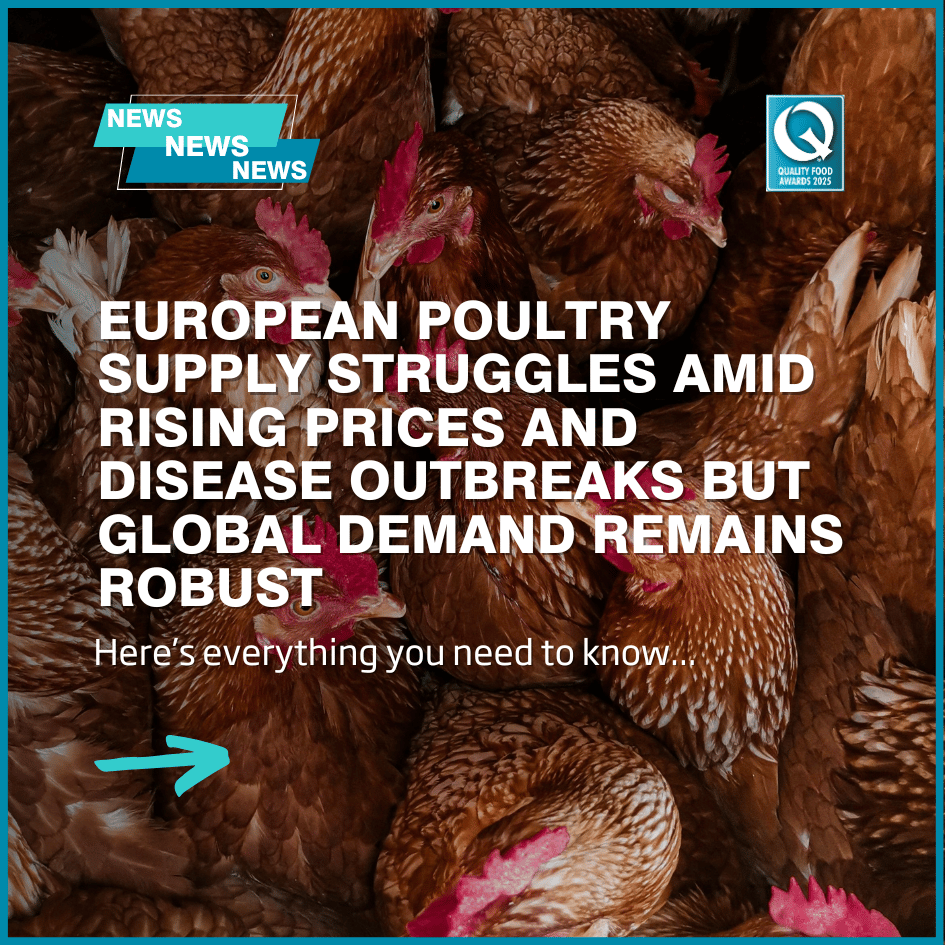
European poultry supply struggles amid rising prices and disease outbreaks but global demand remains robust
Europe’s poultry sector faces supply disruptions and high prices due to avian flu and welfare changes, while global demand for affordable protein sustains growth and profitability across markets like Brazil and Thailand.
Europe’s poultrymeat sector is encountering a multifaceted and challenging outlook for the remainder of 2025 and early 2026, according to a recent quarterly report from Rabobank. While global poultry markets are buoyed by strong demand for affordable protein, Europe—and notably the UK—faces ongoing supply bottlenecks and volatility, raising concerns about the sector’s ability to meet demand sustainably over the coming months.
Globally, poultry demand remains robust, supported by its position as a cost-effective alternative amid rising prices for beef, pork, and eggs. Rabobank’s senior analyst, Nan-Dirk Mulder, highlights that poultry production growth is forecast to reach 2.8% in 2025, slightly up from 2.6% in 2024. Markets in South and Southeast Asia are expected to be the fastest growing, while the EU is projected to see steady growth despite significant supply constraints. The persistent shortage of parent stock is a key limiting factor across Europe, Africa, and Latin America, likely to persist until at least early 2026. Lower feed costs globally are also boosting industry profitability, making poultry an even more attractive protein choice for consumers managing stretched household budgets.
However, Europe’s situation is more complicated due to several converging factors that have stalled production recovery. In the first half of 2025, total poultry production in Europe decreased by 0.8%, with turkey and duck outputs declining sharply by 5.6% and 22.8% respectively, while chicken production saw only a modest 1% increase compared to a 6.3% rise the previous year. This slowdown is strongly linked to the lingering impacts of avian influenza outbreaks that devastated central Europe in Q2, forcing widespread culling of parent stock and leaving a lasting deficit in supply. The situation in the UK reflects similar pressures; domestic production dropped by 0.6% amid retailer shifts toward lower-density chicken stocking, driven by the forthcoming 2026 European Chicken Commitment aimed at improving welfare standards. While some delays to this commitment are being considered to ease supply stress, the constraint on volume remains tangible. The UK has also reduced poultry imports from the EU by 3%, mirroring high prices and tight availability in the bloc.
International trade dynamics add further complexity. Import quotas reintroduced on Ukrainian poultry have trimmed shipments by 5,000 to 10,000 metric tons per month. Meanwhile, Brazil’s significant avian influenza outbreak earlier in 2025 temporarily halted exports, cutting European breast meat supply by roughly 20,000 to 25,000 metric tons monthly during the suspension from May to July. As a result, prices for breast meat have surged to record levels across Western Europe, with Poland’s market serving as a leading indicator. Nevertheless, Brazil’s recent declaration of avian flu-free status and resumption of exports may exert downward pressure on prices, though the scale and timing of this effect remain uncertain.
In response to these disruptions, the UK has diversified its import sources, increasing poultry purchases from countries such as Ukraine, Thailand, and Brazil—benefiting from regional import bans that have been more targeted than nationwide. Thailand’s poultry industry, in particular, is positioned to capitalize on Brazil’s export limitations and globally lowered feed costs, which have improved its competitive edge and boosted profitability. Thai poultry exporters could potentially capture significant market share, with industry leaders projecting gains that may add up to $1.7 billion in revenue if Brazil’s export restrictions persist. This shift underscores the ongoing adaptations within global poultry trade amid endemic disease challenges.
Europe’s avian influenza concerns remain acute, with recent outbreaks reported in Bulgaria and Portugal. Farms affected by the highly pathogenic H5N1 virus, which has resurged seasonally across the continent, face the risk of further culls, supply interruptions, and elevated prices. The virus also poses a public health concern, increasing the urgency for stringent biosecurity measures across the poultry supply chain.
While supply constraints temper the immediate European outlook, global industry players report an overall positive trajectory. Tyson Foods, for instance, has raised its annual revenue forecast for 2025, citing resilient demand for chicken and prepared foods. Despite challenges in the beef segment driven by tight cattle supplies and rising costs, Tyson’s poultry division is expected to generate substantial income, reflecting strong consumer appetite for affordable protein amidst economic uncertainty. These trends align with Rabobank’s broader industry analysis, reinforcing poultry’s position as a growth sector even amid regional setbacks.
In sum, Europe’s poultry market faces a finely balanced future shaped by disease outbreaks, supply chain realignments, and welfare-driven production changes. While global demand and profitability remain encouraging, the continent must navigate tight supplies and elevated prices through early 2026, even as international trade and alternative markets evolve to fill gaps and influence pricing dynamics.
